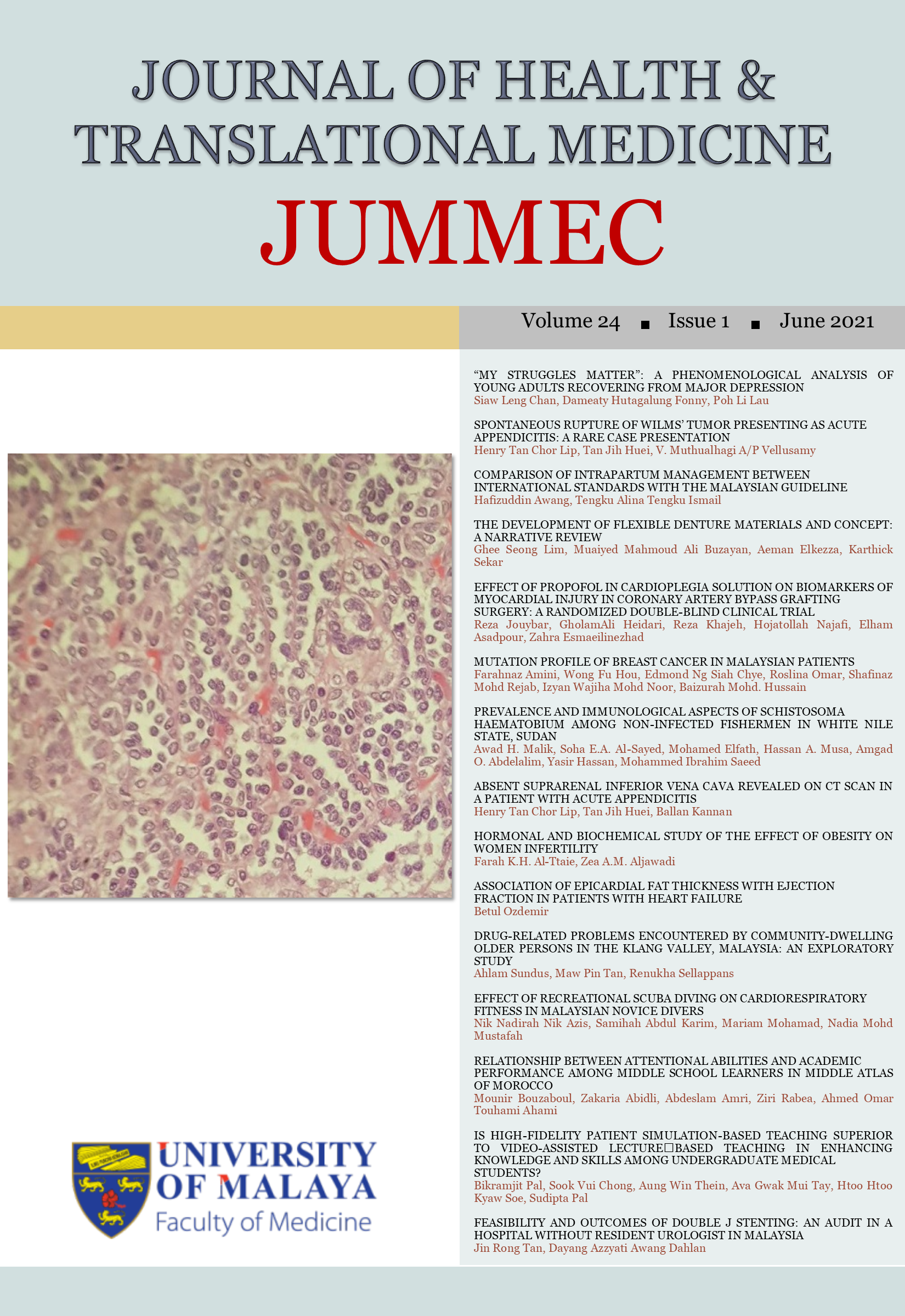PREVALENCE AND IMMUNOLOGICAL ASPECTS OF SCHISTOSOMA HAEMATOBIUM AMONG NON-INFECTED FISHERMEN IN WHITE NILE STATE, SUDAN
Received 2019-12-30; Accepted 2020-12-04; Published 2021-03-05
DOI:
https://doi.org/10.22452/jummec.vol24no1.7Keywords:
S. haematobium, Fisherman, Cytokines, IgE, Immunology, SudanAbstract
Bilharziasis is a tropical parasitic disease caused by different species of the genus Schistosoma. One species, S. haematobium, is widely spread in Sudan. There is a scarcity of information about S. haematobium infection among the fishermen in the country. Therefore, this study was designed to determine the prevalence of S. haematobium infection among fishermen, and the immune status among non-infected fishermen in two villages, El Hadib and Hawer-Ajowel at the White Nile state in Sudan. A cross-sectional survey was conducted among 119 fishermen in addition to 20 samples from non-endemic area which were included as a control group. Urine samples were examined by sedimentation method and faecal samples were examined by the Kato Katz method and formalin-ether concentration technique. Blood samples were examined for enumeration of IgE antibody and cytokines, interferon Gamma (IFN-γ), Tumor Necrosis Factor (TNF) and Interleukin10 (IL–10) levels using ELISA. The result of the study indicated that the overall prevalence of S. haematobium among the fishermen was 35 (29.41 %). Of the 35 positive participants, 23 (65.71 %) were infected for the first time, and 12 (34.29 %) for the second time (re-infection). Twenty-four candidates of the non-infected fishermen were included in the immunological study. The total IgE mean titer was 282.90 ±70.93 iu/ml, IFN-γ mean level was 9.62±4.60 pg/ml. TNF, 114.64±46.63 pg/ml and the IL–10 was 1.51±0.58 pg/ml. High prevalence of S. haematobium exists among fishermen and the non-infected fishermen from the endemic area showed high immune response similar to those exposed to the infection.
Downloads
Downloads
Published
Issue
Section
License
All authors agree that the article, if editorially accepted for publication, shall be licensed under the Creative Commons Attribution License 4.0 to allow others to freely access, copy and use research provided the author is correctly attributed, unless otherwise stated. All articles are available online without charge or other barriers to access. However, anyone wishing to reproduce large quantities of an article (250+) should inform the publisher. Any opinion expressed in the articles are those of the authors and do not reflect that of the University of Malaya, 50603 Kuala Lumpur, Malaysia.


